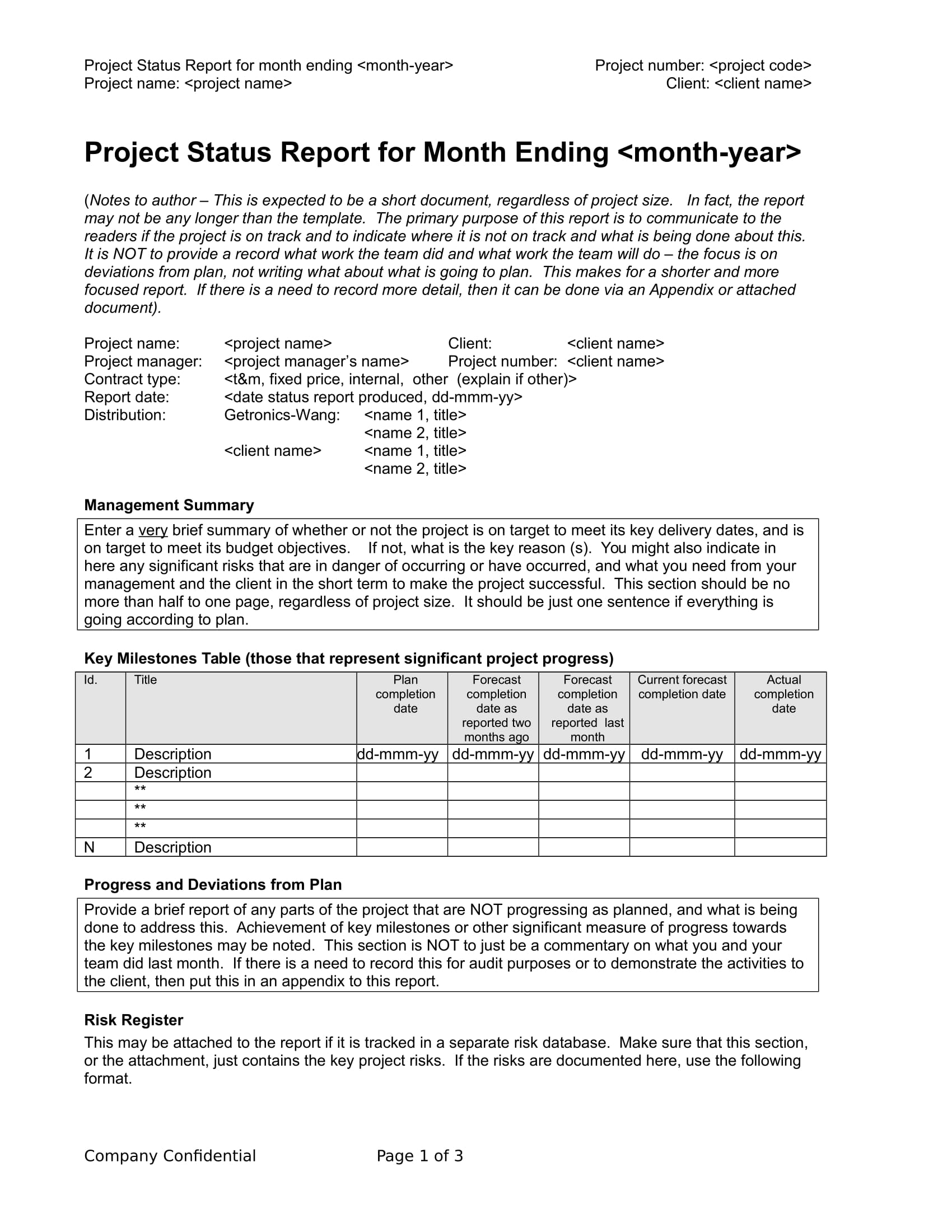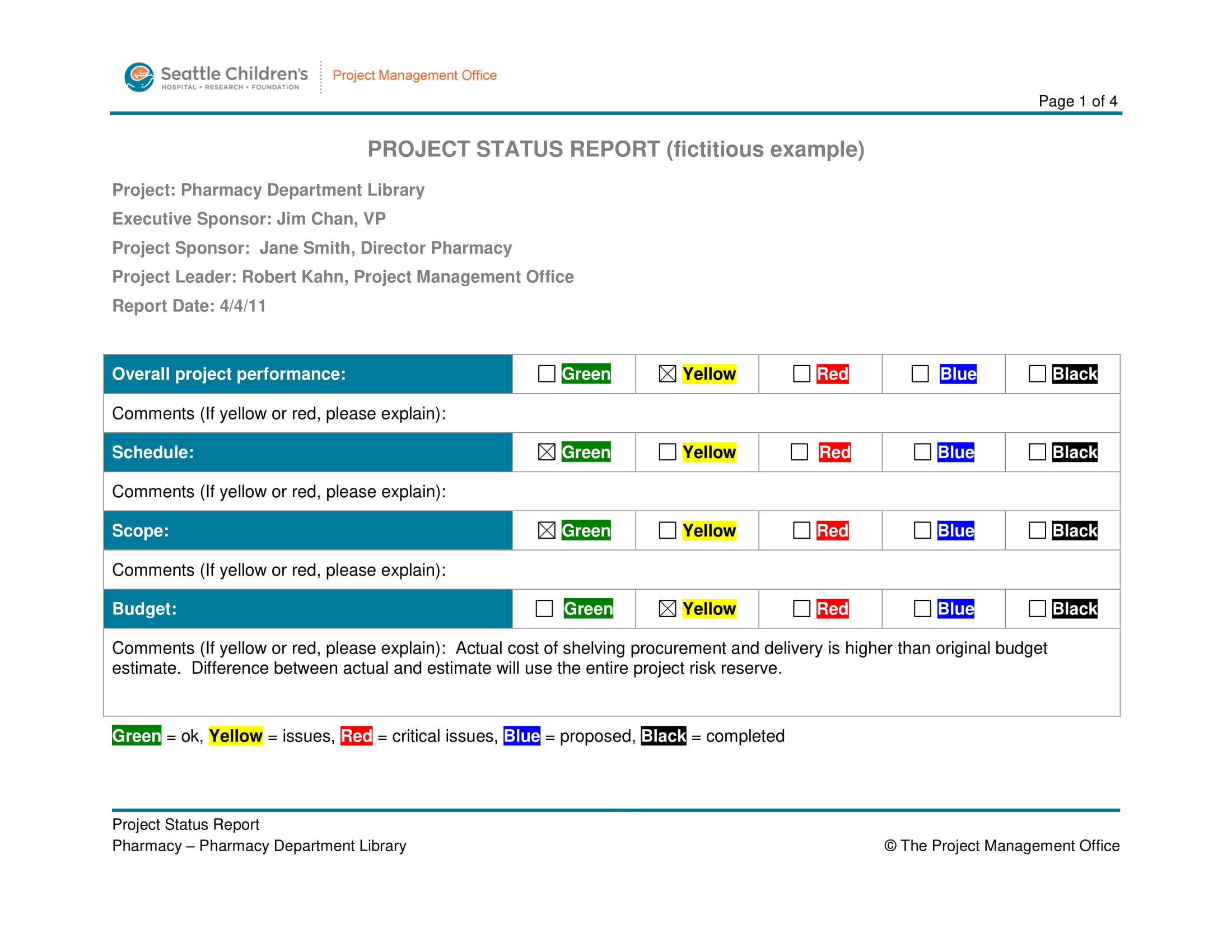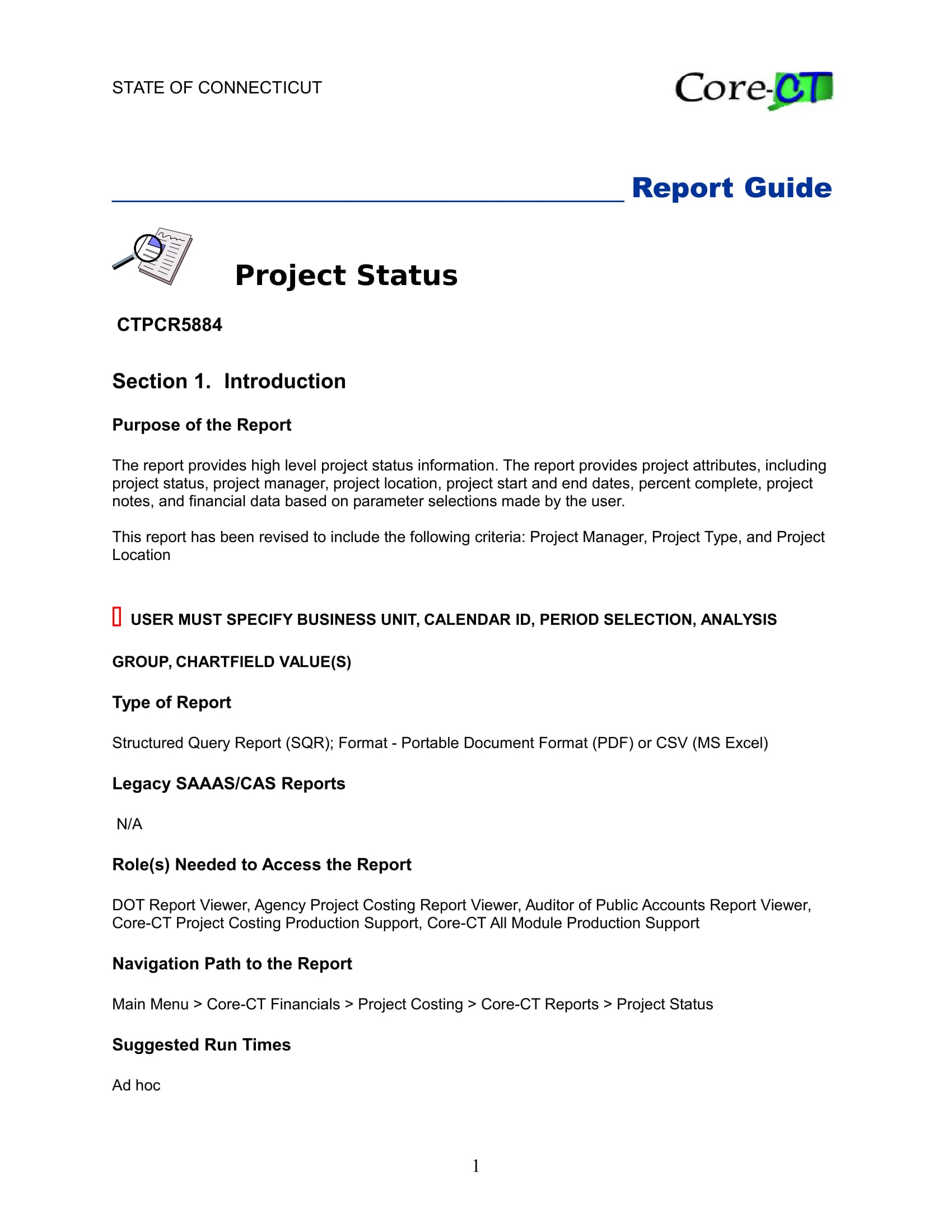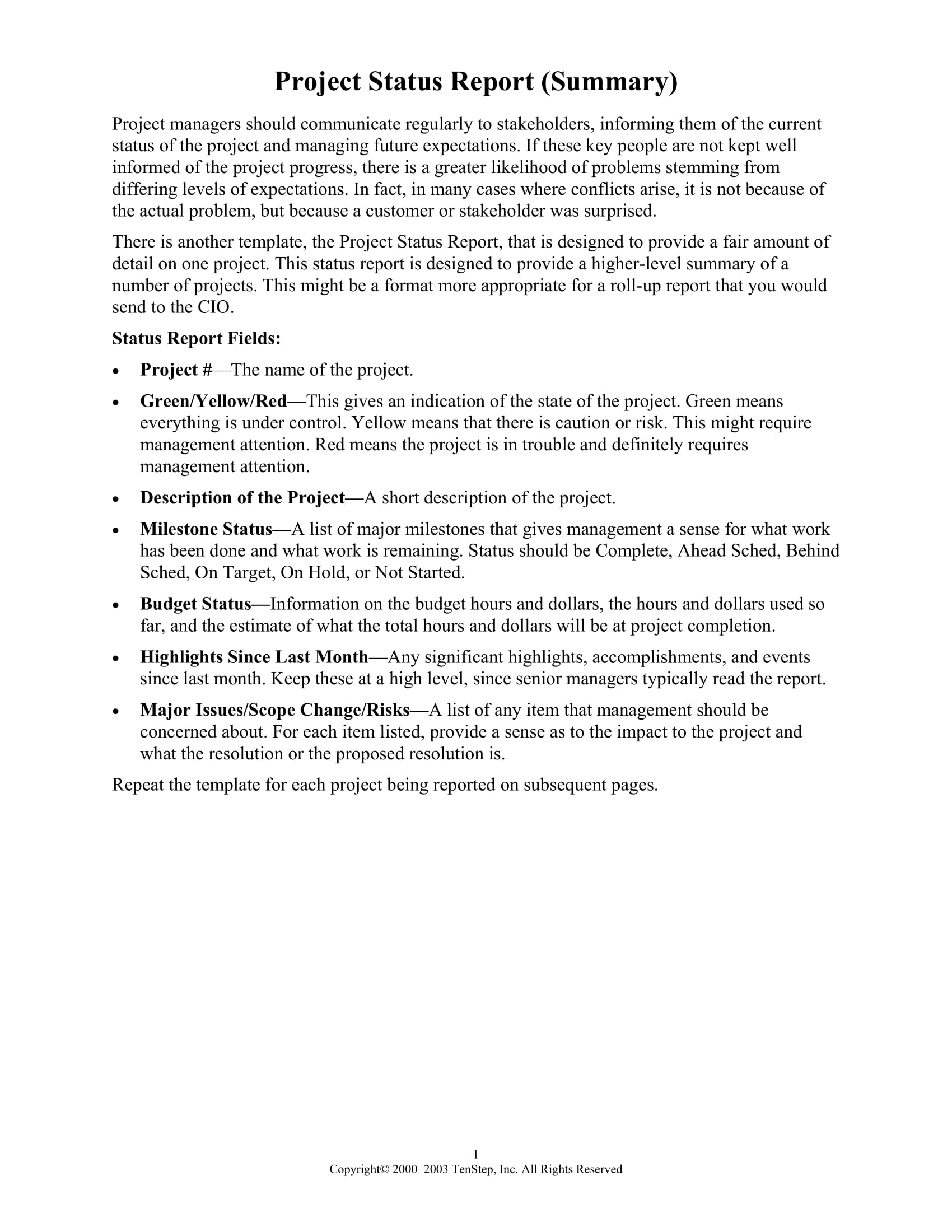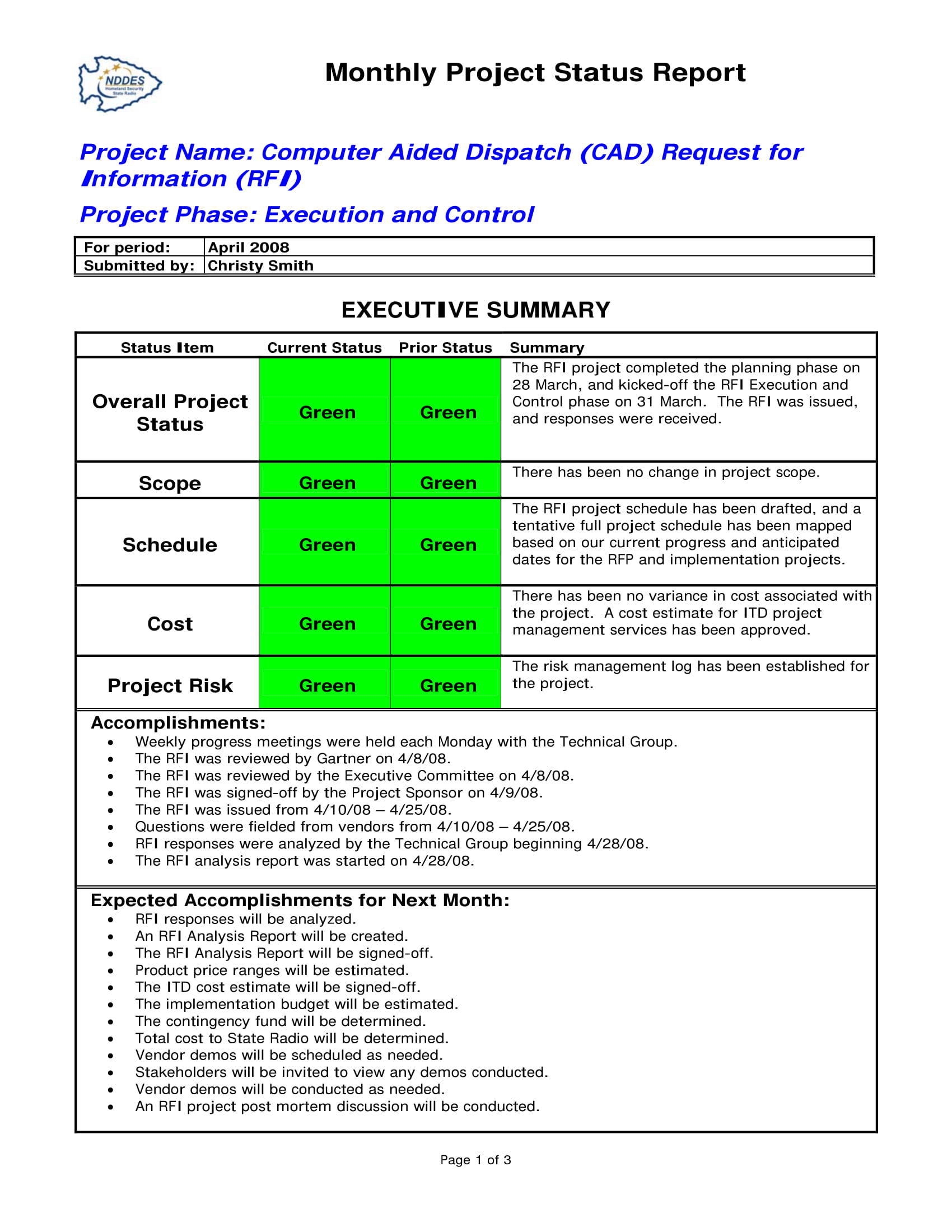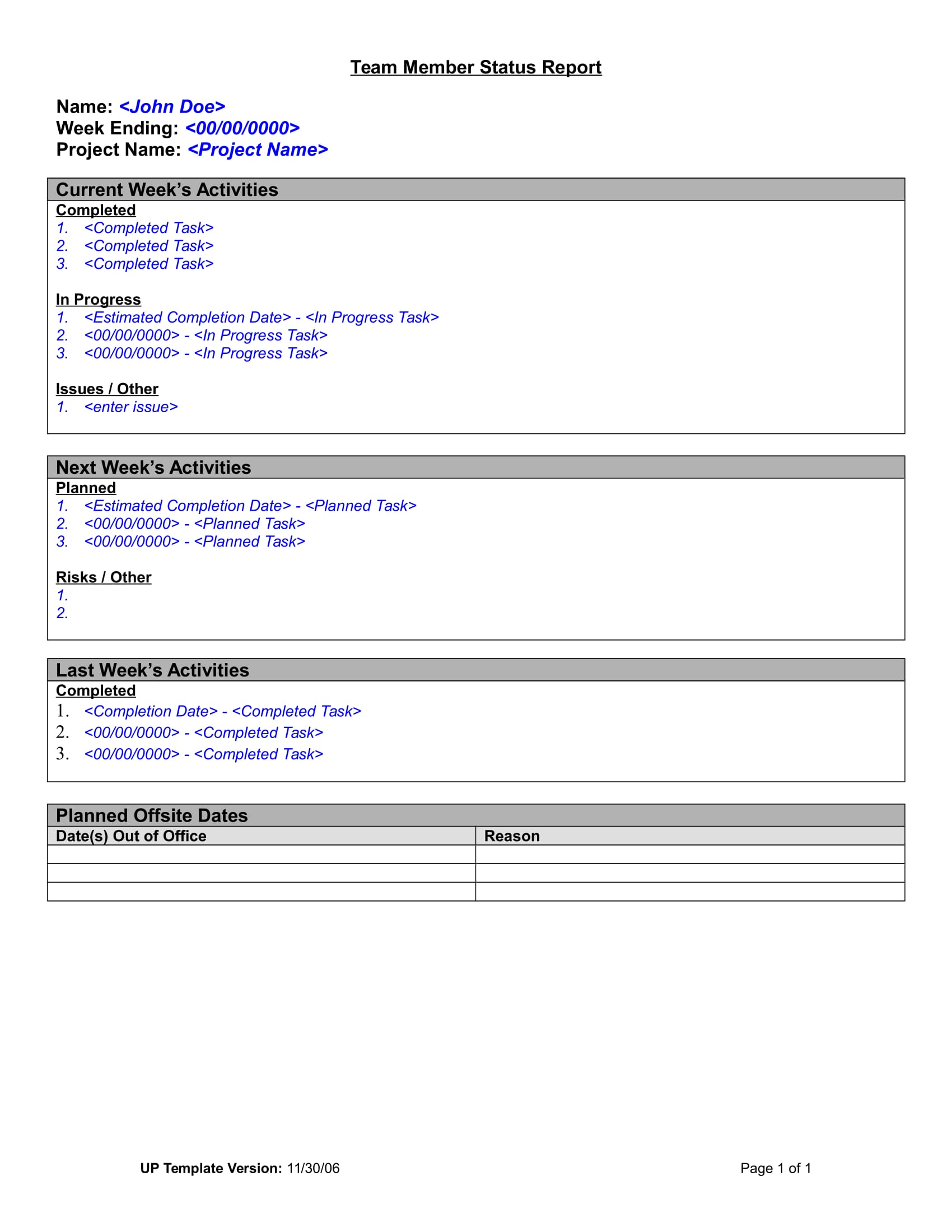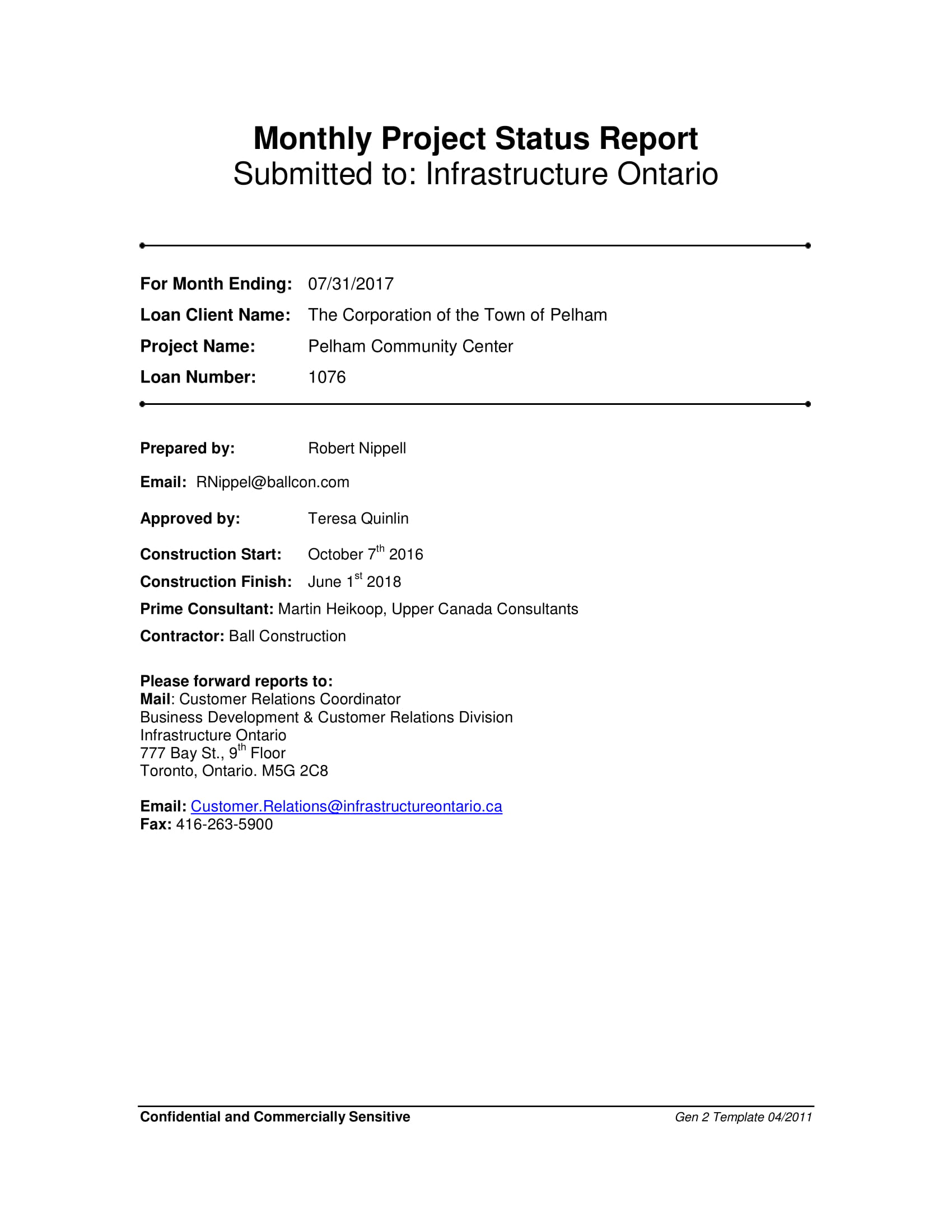9+ Status Report Examples to Download
Just like how you constantly check the oven if the cookies you are baking is ready, people who invest and manage projects also need constant update about the progress of their projects. Not only because they’re excited about the finished product of the project, but more importantly because they want to check if the financial resources are actually used for their intended purpose. You may also see formal report examples & samples.
As the person designated to make status reports, you are in charge of documenting the progress on certain projects. And to add more pressure, the project has a lot of visibility from the executives in your organization. But do not fret, this guide will help you with your status report needs. You may also like consulting report examples.

What is a Status Report?
By definition, a status report is a “a document describing the situation of something such as a project at the present time.” This means that a status report is a document intended to periodically update the project manager/s, the client and the internal team about the project; as to where to project is in relation to where it should be at a certain point in time. You may also see business report examples.
As you know, projects have deadlines. Deadlines in which the project should be finished on the estimated period of time and if not fulfilled will lead to further expense not only financially but as well as in labor and planning. In order to constantly update the people concerned about the project a status report is made.
A status report, similarly known as the progress report, offers a glimpse or a snapshot of the relevant information about the project for anyone who has every right to be in the loop. It offers a comparison as to where the project is in terms of progress and where the project should be in that point of the schedule. Simply put, it is a summary of the progress of a project, its expected completion date and what actions have been taken since the last project status report was submitted. You may also like management report examples.
It is intended to provide an evaluation on a project’s development and progress and communicate the execution details taken. In this case, a status report is a vital part of the evaluation of the progress made for the time during when the report is made. It offers relevant information about the improvement of the project as well as the encountered problems along the way and how was it resolved. You may also check out examples of short report.
Month End Project Status Report Example
Project Status Report Example
Contents of a Status Report
Depending on the guidelines and specific instructions of your organization, there can be different necessary contents in a status report. Here are the most general contents of a status report:
- Opening identifying information
- The name of the project
- The project manager.
- Project description: A brief explanation of the project.
- Reporting period (for instance June 1 – July 20)
- Status summary
- Will the project be finished on time?
- Will the project be complete within budget?
- Are scope change requests being managed successfully?
- Are project issues being addressed effectively?
- Are project risks being effectively managed?
- Are all client concerns being addressed successfully?
- Comment summary. Give more information on any questions above that were answered “no.”
- Significant accomplishments
- Planned accomplishments
- Additional comments or highlights
- Attachments
- Budget and effort hours summary
- Spending for the previous period and project to date
- Estimated total spending at project completion
- Earned value
- Issue Log
- Scope Change Log
- Project work plan
- Project metrics / statistics
You may also see marketing report examples.

Important Elements of a Status Report
A status report must contain the most relevant and important information regarding the status of a project. Here are the key components you should include in your status report:
- Project Details – This pertains to the project name and if applicable, the project code.
- Team – The names of the project manager and other key team members. You may also see sample activity reports.
- Status Date – Schedule of the report, also include the modulation like weekly, bi-weekly, monthly, etc.
- Schedule of Project – The status of the project during a period of time. Have you met all of this period’s milestones?
- Scope – Has the project stayed in scope during this period? This pertains to the adherence of the project within its scope and limitations. You may also like recruitment report examples.
- Budget – Is the project on, under, or over-budget? The budget the project has currently used up during this point of the estimated deadline.
- Quality – Is the quality of the project up to its par? If there are issues at this point of the project it is better to mention them although this is may not be applicable to every status report during every period. You may also check out investigation report samples and examples.
- Dependencies – The dependencies are what the team is waiting for in order to move forward on the project.
- Issues and Roadblocks – A brief description on the issues and roadblock experienced during this period, who is responsible and what has been done to solve them.
Project Status Report Guide Example
Project Status Report Summary Example
Relevant Information in a Status Report
It is important to include just the right information in your status report. In this sense, here are some of the relevant information to include in your project status report:
1. Measuring Status
This pertains to the method or way of visually communicating the status of the project. How will you be able to effectively communicate the development in the project with the use of other indicators other than words?
For example, you can use color to indicate certain statuses. Green for indication that the progress is right on track for a certain activity or milestone; Yellow for communicating that there are issues and risks but there are plans to solve them, and if resolved there will be no impact on the schedule, and Red for when there are issues and/or problems that will directly affect the time and needs immediate action to be taken and might need escalation. You may also see performance report examples.
2. Overall Project Status
As literal as it gets, this is about the overall progress of the project. This is expected to be lengthy since it talks about the overall condition and development of the project. Although due to its tendency to be lengthy, it can be broken down it sections or categories in order to discuss specific topics with more intensity and detail. For example, different discussion for each category like the scope, budget, and people. You may also like what should be in an executive summary of a report?
3. Milestone Status
The milestone represents the significant event or completed output. In order to appropriately call an event or defined work output a “milestone,” there needs to be a criteria and/or a basis. It can then be the defining factor to the continuity of the project. You may also check out monthly report examples & samples.
Your status report should include the major work products and the major phases of the project to gauge and measure the progress. You can include milestones that have been completed six to eight weeks prior to the submission of the report and give an update on them. Be sure to include these components when reporting milestones:
- The name of the milestone that is reflected in the statement of work (SOW) and the project plan;
- Its scheduled starting date and its completion schedule date;
- The date of the current status (on time or behind) and if necessary, its revised end date;
- The percentage of which the milestone is completed;
- High-level notes on progress
- The associated risks or issues of the milestone and perhaps its dependency on other necessary materials.
4. Risks and Issues
By definition, risk is still a “possibility of loss or injury.” Meaning it still has yet to happen or be experienced, in short, it has not occurred yet. Emphasis on yet, it also has the tendency that the risk pushes through. However, to your advantage you can identify a potential problem along the way. Risks needs potential solutions so that they don’t develop into issues. Issues, on the other hand, are risks that have managed to push through or have already happened and/or problems that spontaneously emerged without forewarning. You may also see medical report examples & samples.
5. Accomplishments
Accomplishments and progress made through the effort of the team should be explicitly recognized in your report. However, you don’t have to spend too much time into this but do acknowledge when tasks, actions, milestones are completed since it boosts your team’s morale and improve their state of mind. You may also like service report examples.
6. Key Objectives and Action Items
Key objectives pertain to topics that has no specific designated person, instead it is owned by some part of the team of the entire team. Once these key objectives are completed, they are moved up into the accomplishment section. Examples of key objectives include:
- Holding meetings for security requirements;
- Delivering the first draft of the design document for review,
- Testing out user interface for the cash flow inputs.
On the other hand, action items are have specific person assigned to them. It requires an owner, a requested date (if needed), and a date due. You may also check out quality report examples.
7. Key Decisions
Keeping a master list of all the major decisions made during the entire project will help you keep track of what, how and why the decision was made. If someone questions a decision, it will be easier to refer back to the key decisions log to remind everyone about the decision made. You might be interested in financial report examples.
Monthly Project Status Report Example
Project Status Report Template Example
Purpose of a Status Report
A status report is made in order to give relevant information about the current status and progress of the project. Aside from that, a project report will also:
- Help create and enable stakeholders to pursue a buy-in.
- It provides transparency into the progress towards the completion of the project.
- It helps identify the issues and risks in order to quickly come up with a solution.
- It helps pinpoint the progress of work done by individuals, teams, and resources so you can slowly move forward and bring in outputs in a timely manner.
- A status report provides a high-level basis on the state of the project.
- It helps prevent unpleasant surprises to all those concerned.
- It furnishes a method for keeping project members and leaders accountable.
- It provide a paper trail for evidence or future reference.
- It helps prevent the project from going over its scope.
- It presents the right information to the concerned audience(s).
You may also see free report examples & samples.
Types of Status Reports
1. Weekly Project Status Report
The report tracks the progress of the project as well as budget, milestones, risks, etc. It must contain as much pertinent information as possible. The goal of this weekly report is to give a thorough view of how the project is progressing. The main audience of this report are the project team members, the project manager’s manager, a resource manager, and perhaps the main stakeholder. You may also like annual report examples & samples.
2. Monthly Project Status Report
A monthly or bi-monthly status report helps higher-level managers feel more in control and engaged on their projects an by the project manager. the higher-level managers are more interested in other aspects of the project like the budget,the spend, the quality of deliverable, and the nature of risks or roadblocks. However, this report does not need more details than that of a weekly report. In addition, the information included in this report must not come as a surprise to them. Keeping them updated and always on the loop will make it easier for them too decide (as the decision-makers) if necessary. You may also check out research report examples.
3. CEO-Level Project Status Report
Many project management experts think that a CEO-level report can be the key to buy-in and visibility form the high ranks of a company’s organization. The CEO is most probably looking for guidance and recommendations from the project manager. The information you include in this report are the interpreted data from your previous weekly and monthly reports because they are the most critical for this audience. Remember that the CEO only wants to see the top-level highlights. You might be interested in technical report examples & samples.
4. Monthly Team and Resources Status Report
It’s useful to create separate team and resources status report if your company is handling different or overlapping projects at a time. This report should effectively capture the work of differences resources. It should also indicate if a resource is about to end its tenure or join the project. The audience fro this report are resource managers, team directors, and others managing various types of resources. You may also see employee report examples & samples.
5. Stoplight Project Health Status Report
This report is gaining more popularity since companies now have realized that it burdens the project manager when packing endless data points into weekly or monthly reports. This report visually presents elements with a color-coding scheme as if it is a traffic light. For instance, green for on-budget and on-target; yellow for potential risks being posed; and red for true roadblocks, overspending, and the like. You may also like visit report examples & samples.
Team Member Status Report Example
Monthly Project Status Report Example
How to Write a Status Report
Since by this time you already have a good template to follow for your status report, these easy steps can help your produce a good quality status report:
1. What are the key highlights?
As you begin with your status report, you can start the report with the project highlights. Make sure to add the project sponsor and the date. In addition, be sure to note the name of the project manager. Basically, you are trying to make an executive summary. It is a the right place to mention what you need and when. Aside from that, make sure you leave space for additional progress and achievements. Most importantly, include the overall project timeline completion schedule. You may also see inspection report examples & samples.
2. What needs attention?
Everything that needs immediate attention and action must be stated in your report. This way you can effectively communicate the needs that should be immediately addressed to the right individual/s. This can also be your way to ask for support on the project be it financially, logistically or whatever it may be that you need. The conversation can be started through your status report. You may also like report form examples & samples.
3. Note milestones.
Milestones are bigger than tasks but smaller than the project itself. Meaning they are the minor or major achievements or progress completed within the project timeline. Noting the milestones will help you see your current progress and can help you determine where you are in the timeline of the project. In this way, you can also inform the stakeholders and/or sponsors of the project whether you’re in schedule or not. You can make a list of the major completed tasks or milestones in your report as well. You may also check out audit report examples & samples.
4. What are the key risks and issues?
List the issues and problems encountered during the execution of the project. However, do not go overboard, only list the major ones and prioritize them. Through this you can provide a transparent output o the project to your stakeholder and/or sponsors. Make sure you also include the actions take or needs to be taken in order to resolve the issues or risks. In addition to this, do not use the report to deliver really bad news as it needs a face-to-face conversation the moment you know a critical issue or problem exists. You might be interested in police report examples.
5. What is the budget?
Include in your report how much of the budget you have managed to spend along with the overall percentage spent. You are not required to go into detail with this, however, you need to inform your stakeholders and.or sponsors whether you’re behind, ahead or on target. In order to effectively communicate this, compare the actual expenditure to the estimated expenditure. You may also see how to write a progress report.
IT/Operations Weekly Project Status Report Example
Monthly Project Status Report Example
Benefits of a Status Report
1. Focus
The status report is a useful tool to help everyone focus on the same daily, weekly or monthly issues. This will everyone involved in the project have a clear picture on what should be prioritized and what to disregard as of the moment. You may also see sales report example & samples.
2. Clarity
The status report is a great avenue to clarify certain lapses. For example when there are issues that can affect the timing or budget of the project, you can highlight them in your status report to draw the stakeholders’ and/or sponsors’ attention on them. It is also a great way to make sure that you, as the Project Manager, is constantly keeping track of the current status against the original quote or plan. You may also like newspaper report writing examples in pdf.
3. Record
Through the status report you can keep a record of what, and when, things have happened throughout the course of the project. The summary of the key decisions, , progress and weekly future actions for your project can be a good reference in case questions may arise. So in case you are on a sick leave or vacation leave, other team members will still have access to this records and will not affect the activities for the project. You may also check out how to report a quality issue.
4. The bigger picture
The status report is also a great way to highlight the status of the project to your internal team since you can easily send it to them or instruct them where to find it. In this way your team can get involved to the project as a whole and not only on their assigned tasks. You might be interested in how to write an evaluation report.
In the end, status reports are vital documents to help the people involved and concerned with the project up to date with the progress and development of the project. It provides relevant information on the condition, development and achievements completed during a certain period in time during the execution of the project.



